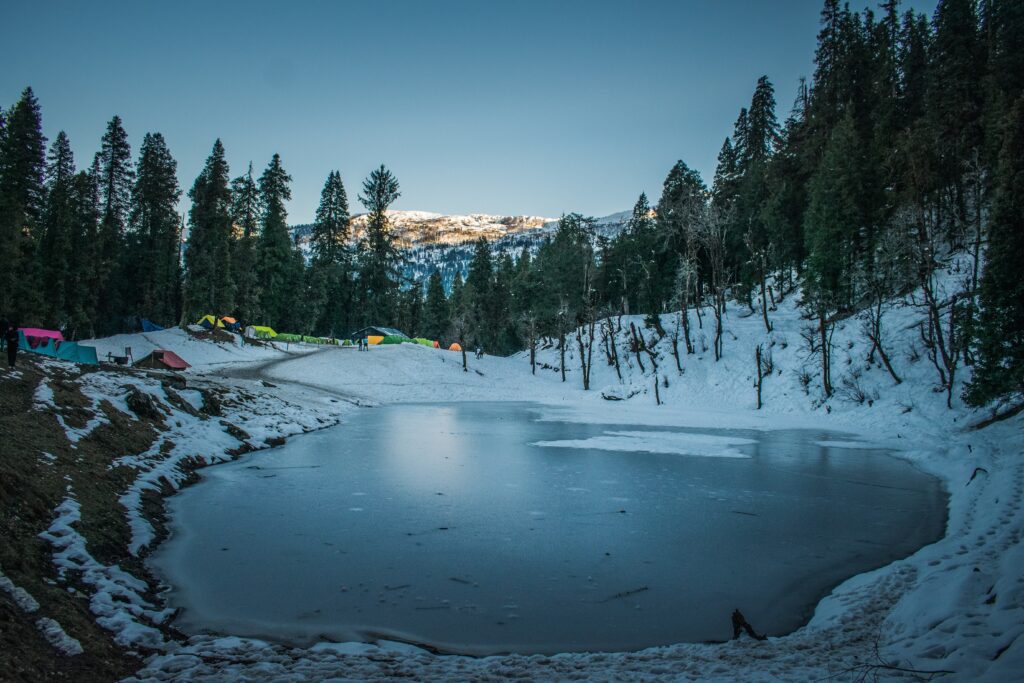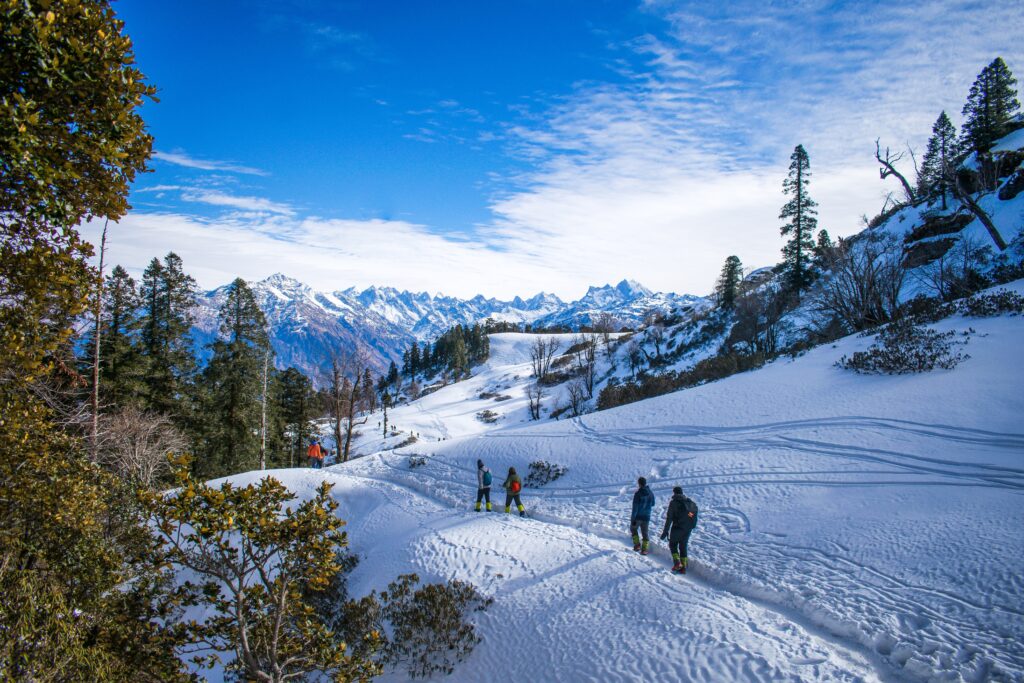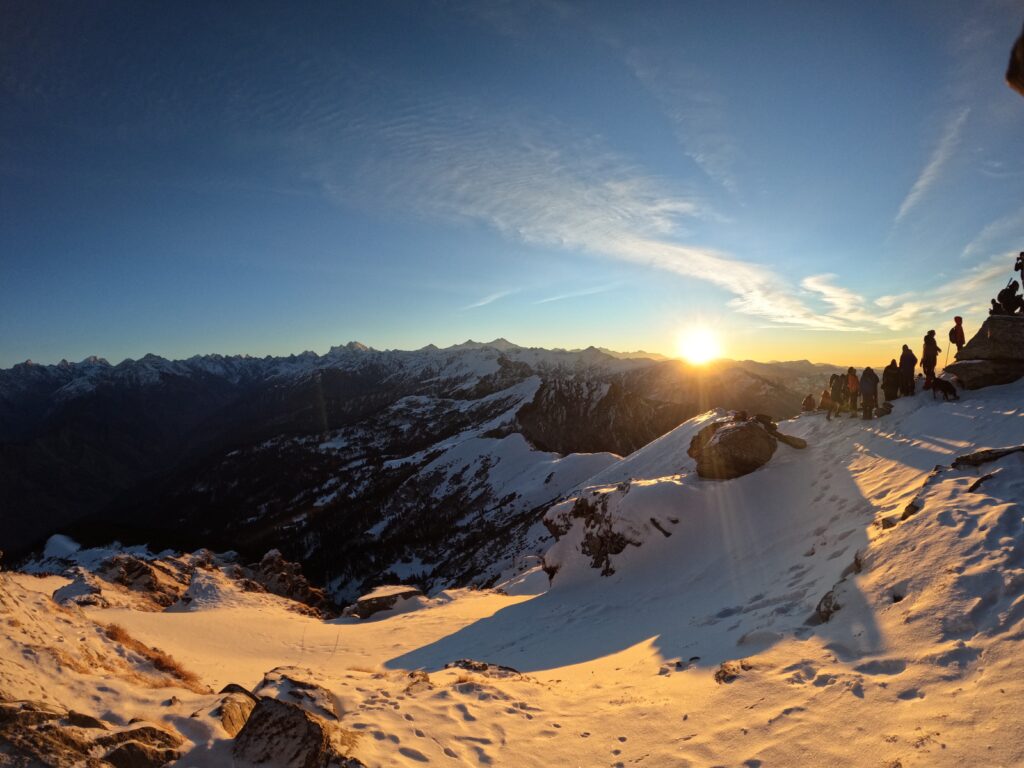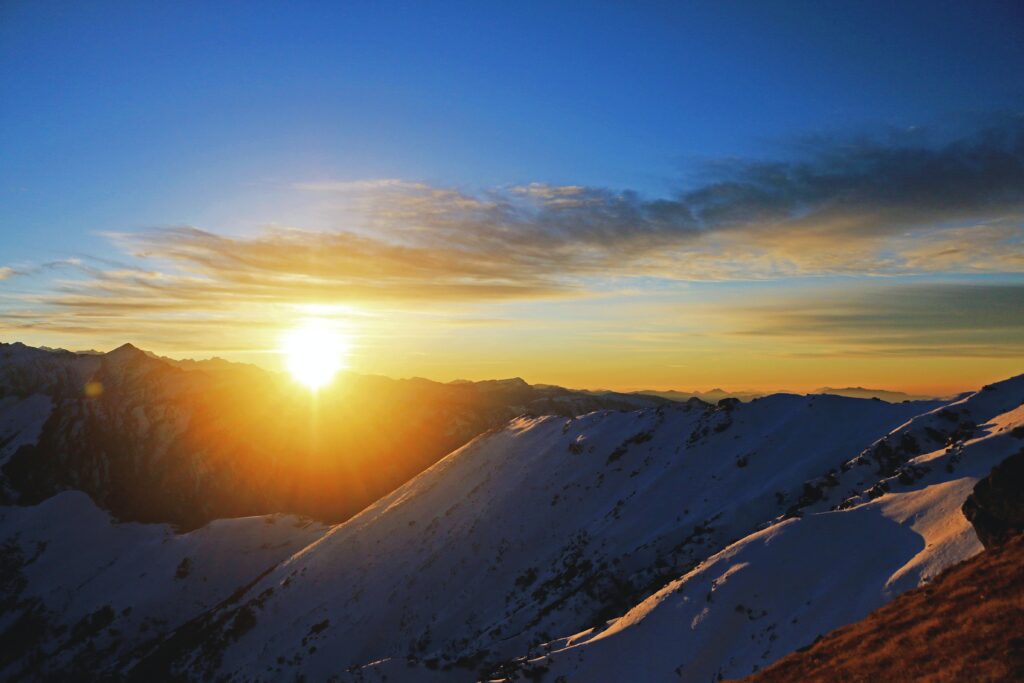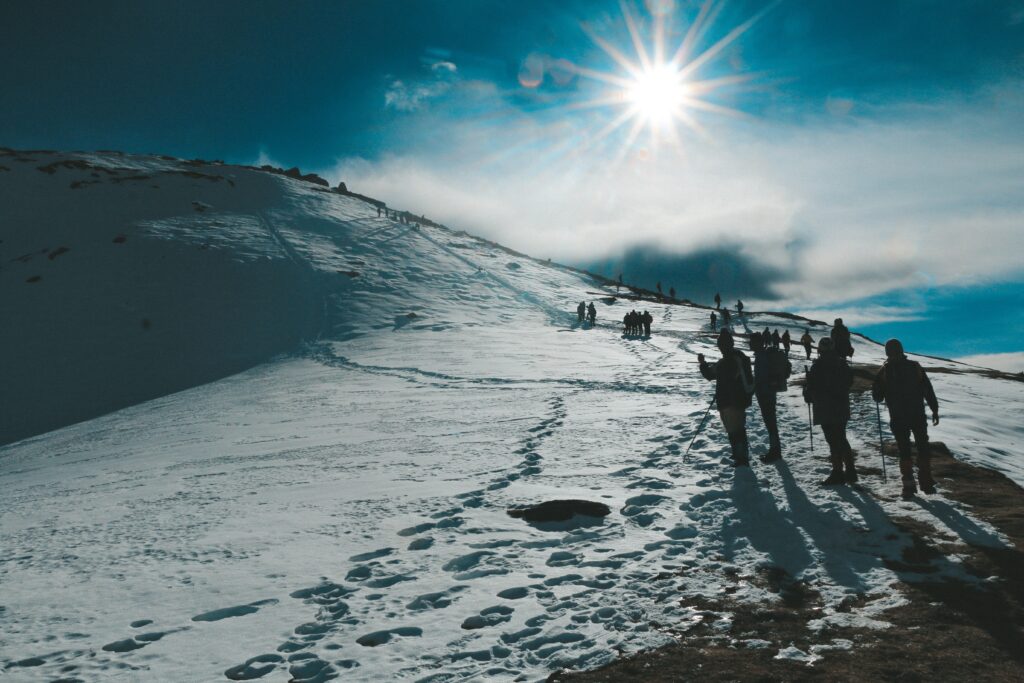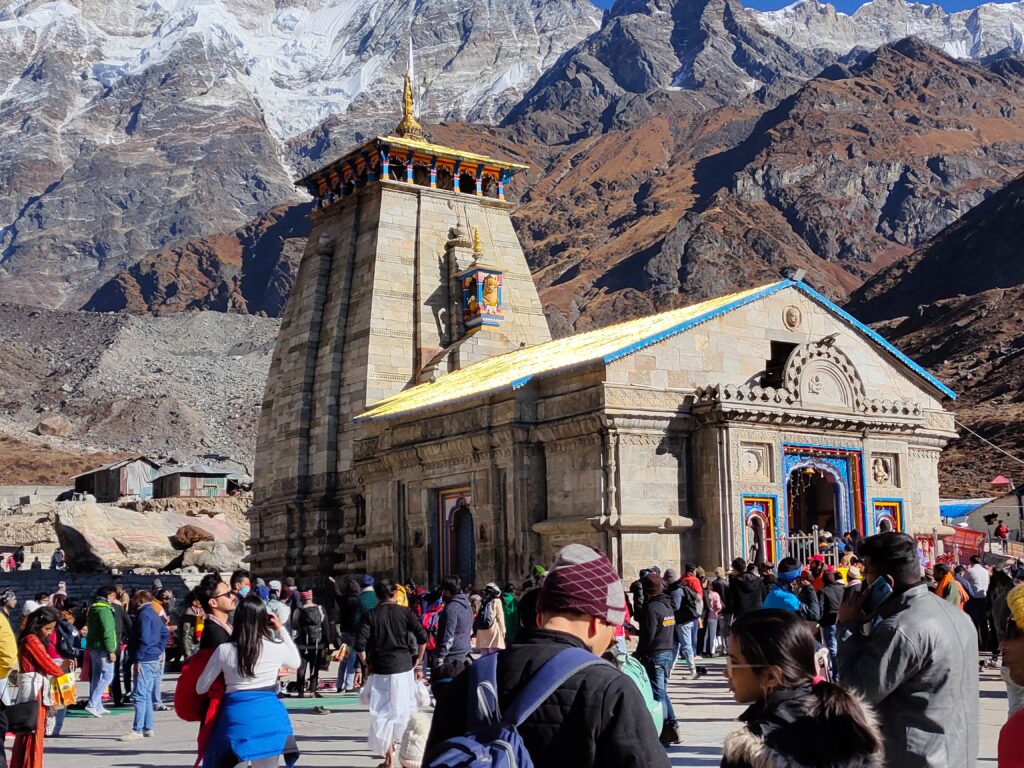Uttarakhand
Peak Climbing
Mountaineering is the sport of mountain climbing. While some scholars identify mountaineering-related activities as climbing (rock and ice) and trekking up mountains, others are also adding backpacking, hiking, skiing, via ferrata and wilderness activities, and still others state that mountaineering activities also include indoor climbing, sport climbing and bouldering.However, to most of the scholars, the term mountaineering is understood as climbing (which now refers to adventure climbing or sports climbing) and trekking (hill walking in 'exotic' places).Hiking in the mountains can also be a simple form of mountaineering when it involves scrambling, or short stretches of the more basic grades of rock climbing, as well as crossing glaciers.
While mountaineering began as attempts to reach the highest point of unclimbed big mountains, the sport has branched into specializations that address different aspects of the mountain and consists of three areas: rock-craft, snow-craft, and skiing, depending on whether the route chosen is over rock, snow or ice. All require experience, athletic ability, and technical knowledge to maintain safety.
Sightseeing
Tourism is travel for pleasure or business; also the theory and practice of touring, the business of attracting, accommodating, and entertaining tourists, and the business of operating tours. Tourism may be international, or within the traveller's country. The World Tourism Organization defines tourism more generally, in terms which go “beyond the common perception of tourism as being limited to holiday activity only”, as people “traveling to and staying in places outside their usual environment for not more than one consecutive year for leisure, business and other purposes”.
Travel
Dedicated road bicycles have drop handlebars and multiple gears, although there are single and fixed gear varieties. Road bikes also use narrow, high-pressure tires to decrease rolling resistance, and tend to be somewhat lighter than other types of bicycle. The drop handlebars are often positioned lower than the saddle in order to put the rider in a more aerodynamic position. In an effort to become more aerodynamic, some riders have begun using aerobars.
And when aerobars where invented is unclear but they seem to date back to the early 1980s. The light weight and aerodynamics of a road bike allows this type of bicycle to be the second most efficient self-powered means of transportation, behind only recumbent bicycles due to the latter's higher aerodynamic efficiency.
Mountain bikes fitted with slick or semi-slick are also popular for commuters. Though less efficient, the upright riding position allows the cyclist a better view of traffic, and they can also be readily fitted with mudguards, cargo racks and other accessories. Mountain bikes are usually ridden on unpaved roads and tracks but they are not to be confused with cyclocross bikes.
Trekking
Being a soft-adventure sport, almost anyone in reasonable physical condition can go trekking. To get initiated into trekking begin with day hikes, returning to your starting point in the evening. Move on to a multi-day trek which is relatively easy, in order to get to know your ability and aptitude. You can venture into the mountains with an experienced trekker, join an adventure club, or go with a reputed adventure travel company. It is not a good idea to venture out into the mountains alone – unless you happen to be a distant relative of the mythical Himalayan yeti (or an aspiring Reinhold Messner, the first person in the world to have climbed all fourteen 8000m peaks, including the first oxygen-less ascent and later the first solo ascent of Everest).
A basic knowledge of camp craft, map reading and first aid is essential before you go trekking. It’s a good idea to do an adventure course from one of the mountaineering/ adventure institutes in India. A basic course in mountaineering and a first-aid course are recommended if you decide to take it up more seriously and trek to remote/high-altitude areas. Get as much information about the trekking area as possible – the people, their culture, the geography, terrain, medical/rescue facilities and weather conditions – before you go.
Trekking in India
Trekking in India started when the land was inhabited in prehistoric times. There are perhaps as many trekking routes in India as there are Indians. It was in the 1970’s and 1980’s that trekking started gaining in popularity as a recreational/adventure sport. A number of religious sites and shrines across the country, especially in Jammu and Kashmir, and in the Garhwal region of Uttarakhand – such as Badrinath, Amarnath, Gangotri, Hemkund, Joshimath, Kedarnath, Vaishno Devi and Yamunotri – entail trekking for a couple of days in the mountains. Trekking in India has grown in leaps and bounds and the current trekking scenario is very promising, with thousands of Indians and foreigners hitting trekking trails each year.
What India can boast of is some of the most stunning trekking routes in the world – many of the mountain passes in the Ladakh and Zanskar Himalayas are above 5000m. But there are plenty of gentler and smaller trails, at different altitudes, both in the mountains and in the forests. If you’re looking for less arduous hikes, you’ll find plenty in in the Western Ghats and the Nilgiri Hills of south India (Munnar and Wayanad in Kerala, Coorg in Karnataka, and around Ooty in Tamil Nadu).
Equipment
It is possible to rent/buy trekking equipment all over India from clubs and adventure- gear manufacturers. Do thoroughly check all gear before venturing out into the mountains.
1. Small rucksack / knapsack
2. Sleeping bag
3. Lockable duffel bag
4. Karrimat / Therm-a-Rest
5. Tent
6. Personal toiletries
7. Water bottle (at least 2 litres)
8. First-aid kit
9. Camera with spare batteries and film (carry more film than you think you will need!)
10. Headlamp/torch with spare cells
11. Maps
12. Diary/pen/reading material
13. Sewing kit
14. Swiss Army knife
15. Whistle
16. Sunscreen – with high SPF (at least 30, to better protect you from harmful UV rays)
17. Lip salve/ChapStick
18. Sunglasses with retainers/spare prescription glasses
19. Lighter
20. Emergency rations/goodies
21. Parachute cord
22. Ski-stick/ice-axe
23. Rope (for high-altitude treks)
24. Plastic bags and Ziplocs for packing gear
Best season in India
May/June and September/October for Garhwal, Kumaon (Uttarakhand), Sikkim and Himachal Pradesh
June/July and August/September for Ladakh and Zanskar (Jammu and Kashmir)
One can trek in the foothills of the Himalayas from October through till March
Trekking destinations in India
1. Jammu and Kashmir (Ladakh, Zanskar)
2. Himachal Pradesh
3. Uttarakhand (Garhwal, Kumaon)
4. Sikkim and Darjeeling
5. Northeast states (Arunachal Pradesh)
6. Western Ghats
7. South India (Nilgiris, Coorg)
Tips
1. Hydration
2. Clothing / staying warm (‘Cover your head if your feet are cold gentlemen’ is an old English saying)
3. Packing a rucksack
4. Pacing yourself on a trek
5. Timing – ‘Start early and arrive early’ is the cardinal rule of trekking
6. Porters and guides – A guide, or guide-cum-cook, is important on routes that are remote, tougher and relatively less trodden. Porters, with the option of ponies, will come in extremely handy on longer trips, especially if you’re carrying lots of provisions.
7. Mules and horses on the trail
Medical concerns
If you have a previous medical condition, do remember to carry the necessary prescribed medication.
